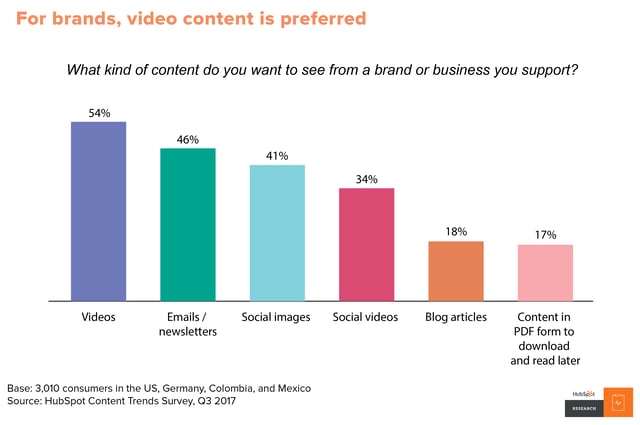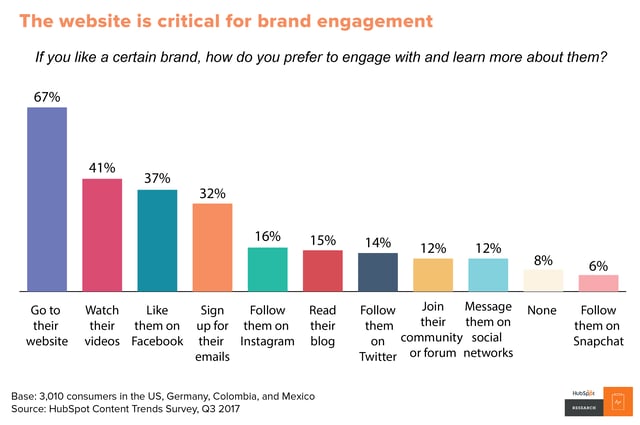
There haven't been better growth opportunities for professional services businesses in several years.
After years of sluggish economic conditions, business growth is picking up steam. As one example, Apple recently announced plans to spend $350 billion and create 20,000 jobs in the US in the next five years. As wary corporate executives become more optimistic, they will invest more money in professional services.
The question many business owners ask themselves is "What should I do to take advantage of these opportunities?" While this is a perfectly valid question, many business owners should ask is "What should I stop doing to take advantage of these opportunities?"
Here are 3 things that most professional services businesses should stop doing to grow their businesses.
Stop Doubling Down On What Worked In the Past
Professional services buying behavior, fueled by technological advances, is changing at lightning speed.
Yet many professional services are sticking with what has produced in the past. Traditional marketing channels like referral selling and up-selling existing clients should always be part of your professional services marketing strategy. There is a simple reason for this - these marketing channels take advantage of
But technology has rendered some of the tried and true prospecting techniques ineffective.
Take cold-calling as an example - technology has made cold-calling a low-percentage technique. Busy buyers don't have time to pick up calls from numbers they don't recognize. They let calls go to voicemail and delete them within 3 seconds if it's not something relevant to their life. The truth is that cold-calling turns a lot of buyers off - it just may be hurting you more than helping you.
Email marketing is still effective. But consider this - the average office worker receives 121 emails a day and sends around 40 business emails daily. Long emails that boast about your capabilities will get lost in the sea of sameness. Effective businesses send short emails with engaging subject lines that get to the point quickly.
Consider the inbound marketing playbook from 2010 - post lots of blog posts with links to PDF downloads. Now look at buyer content preferences from the 3d quarter of 2017.

You will note that blog articles and PDF downloads are the least preferred of the 6 content formats! Does this mean that you should stop writing blog articles and
- Start publishing visual content like videos and infographics on your blog and website.
- Include images, videos, and charts in your blog posts.
- Break up your blog posts with bullets, headers and bolded text. Most buyers skim blog posts, they don't read them like a book.
The bottom line is that you need to understand how buyers prefer to consume information and structure your website and content marketing efforts accordingly. The chart below should help you understand buyer preferences.

Stop Pursuing Low-Percentage Opportunities
One of the first things I learned when I started my business was that the more narrowly I focused my target market, the more opportunities I got. Today's B2B buyers are looking for solutions that are suited to their unique requirements. According to Adobe, 75% of buyers say that dynamic, personalized content is important.
It just makes sense - what works for a retailer probably has no applicability to a management consultant. SMB professional services businesses should focus on 2-3 target market niches at most. If you target more than that, you risk becoming a jack-of-all-trades and master of none. And buyers are looking for masters.
Here are some tips for focusing your limited business development resources on high-percentage opportunities:
- Know who you are and what you do best. Focus on target market niches where you have domain expertise and a track record of success. Most businesses should be eliminating target markets rather than adding new ones.
- Know the buyers in your target market. You will note that I said "buyers." The modern buying process almost always involves more than one buyer. There are economic buyers, user buyers, and influencers in almost all B2B sales processes. Know who each of them is and produce content for their unique requirements.
- Use marketing automation to focus on high-percentage opportunities. In your inbound lead generation process, ask questions on lead generation forms that identify the characteristics of a good prospect for you - things like industry, company size, and role in the organization. Let your marketing automation sort out leads that fit your target profile. Then apply the human touch to research the person and company to determine how and if you will pursue this lead.
By focusing on a tightly defined target market niche and applying discipline to not waste time on opportunities outside of your niche, you will increase your chances of success.
Stop Guessing What Works And What Doesn't
It's no longer effective to set your business development strategy and wait until the end of the year to find out if it worked.
Sales and marketing data is available to even the smallest professional services business. Whether it's Google Analytics or data derived from Growth Stack software like HubSpot, you should be able to measure progress against the SMART goals you set for your business.
Dashboard software like Databox aggregates data from different sources and provides easy-to-understand dashboards for management review. You should review dashboards frequently (we recommend weekly) and use a lean process to optimize your business development process.
If a marketing channel or campaign is out-performing goal expectations, perhaps it makes sense to shift resources to this channel or campaign. If a channel is under-performing, it's time to ask the question "Why?" You should then either make and adjustment to your approach or consider shifting resources to something more effective.
The point is to use technology to optimize your business development process as it's playing out - don't wait until it's too late.
The improving US economic climate portends good things for those professional services businesses that listen to their customers and sell to them the way they want to buy. In many cases, that means changing some old habits and adding some new tricks to your business development playbook. Stop doing these three things in your professional services marketing and you will be well-positioned for a fantastic year.








